The Mobile CPU Core-Count Debate: Analyzing The Real World
by Andrei Frumusanu on September 1, 2015 8:00 AM EST- Posted in
- Smartphones
- CPUs
- Mobile
- SoCs
Real Racing 3 Launch
Next we'll look at another real-world use-case with a popular Android game: Real Racing 3. First off we start by analyzing the launch behaviour of the app. I monitor the system from the launch up until the game starts its auto-play introduction around the 18s mark.
At first the load is fully migrated onto the big CPU cluster so we see little to no activity on the little cores. Once the initial opening is done, we see threads migrate back to the small cores.
Beyond the initial app launch, it looks like RR3 isn't too multi-threaded as we only see some short bursts on the big cores, but they never exceed a total run-queue of 1.5 during the main loading sequence.
Overall, the game's rq-depth averages around 2.5 during the main loading sequence with a larger burst of 7 threads when the 3D intro starts playing.


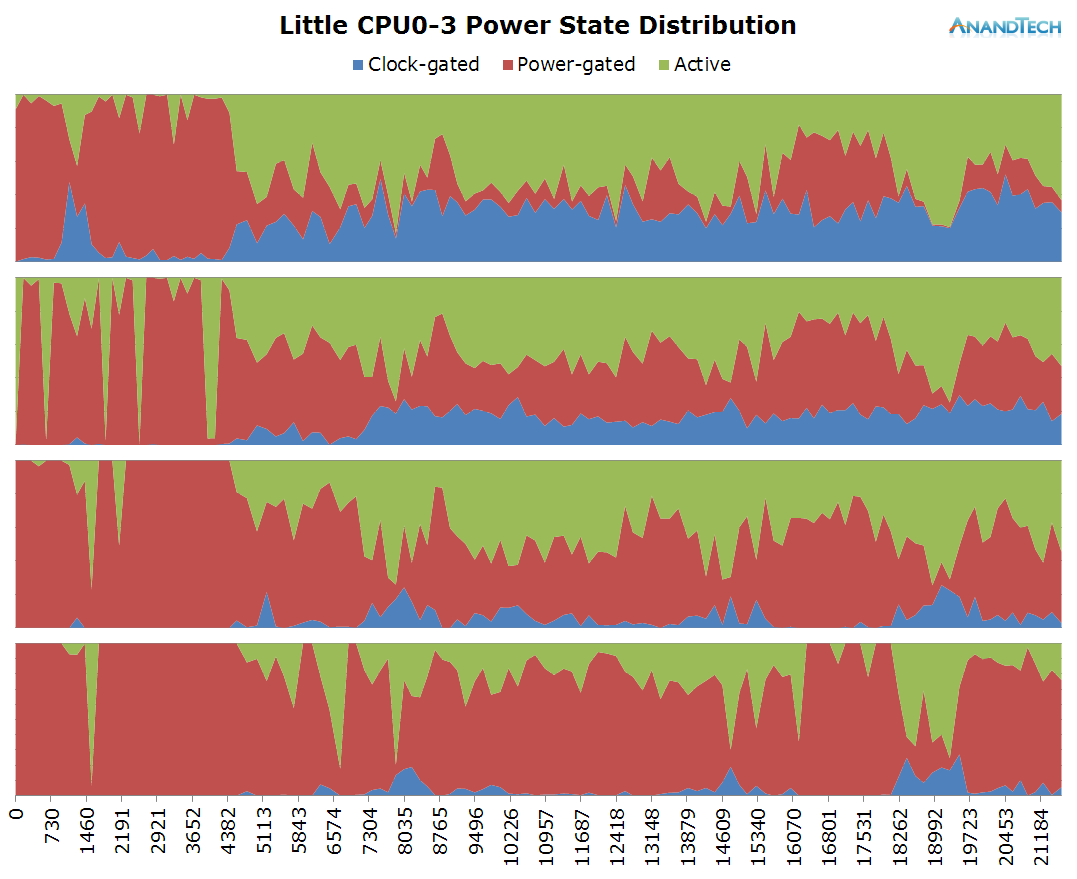
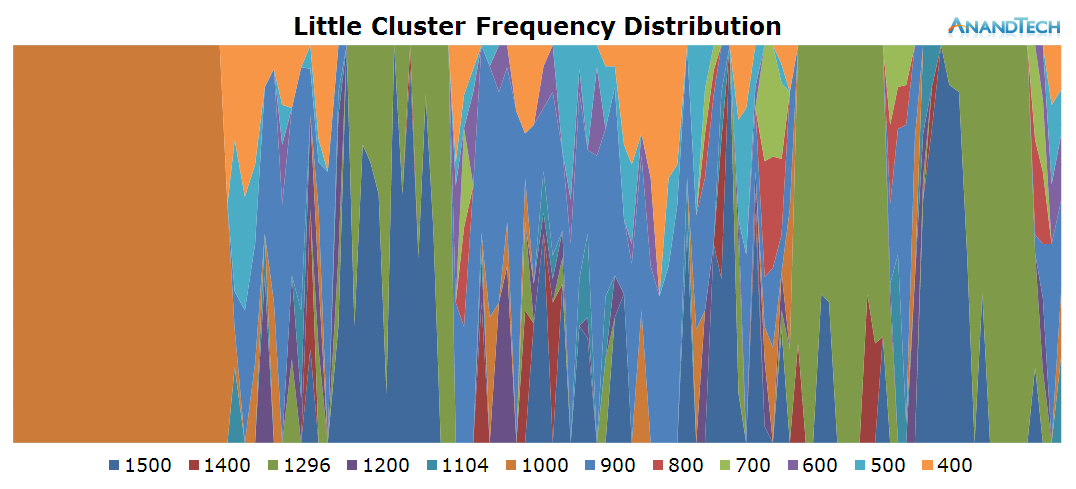
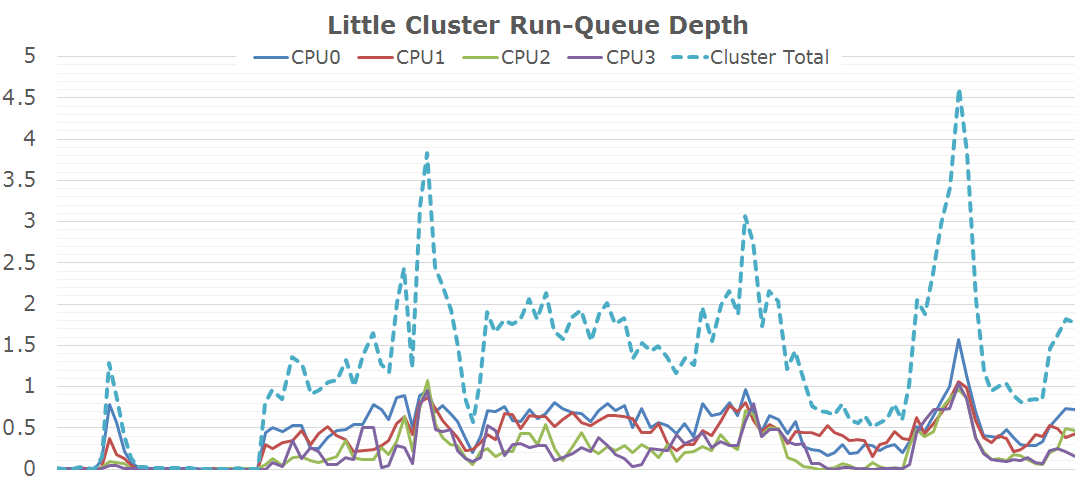
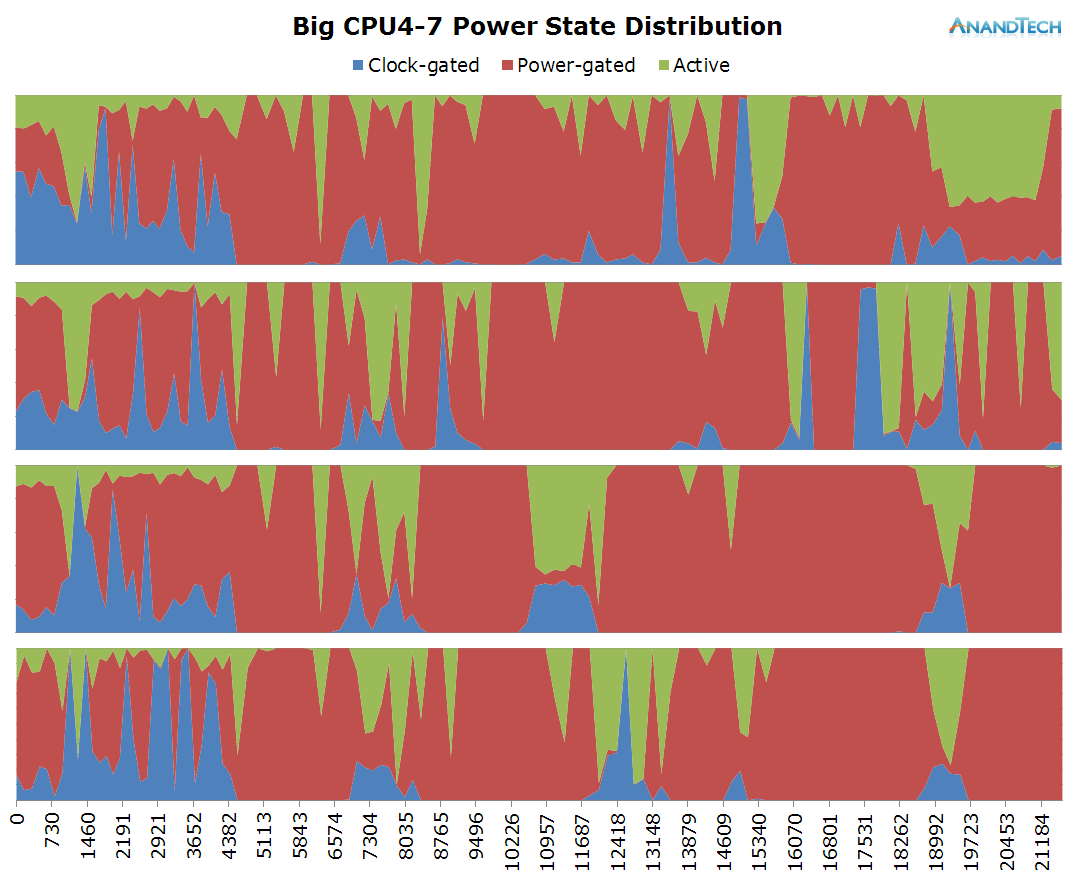

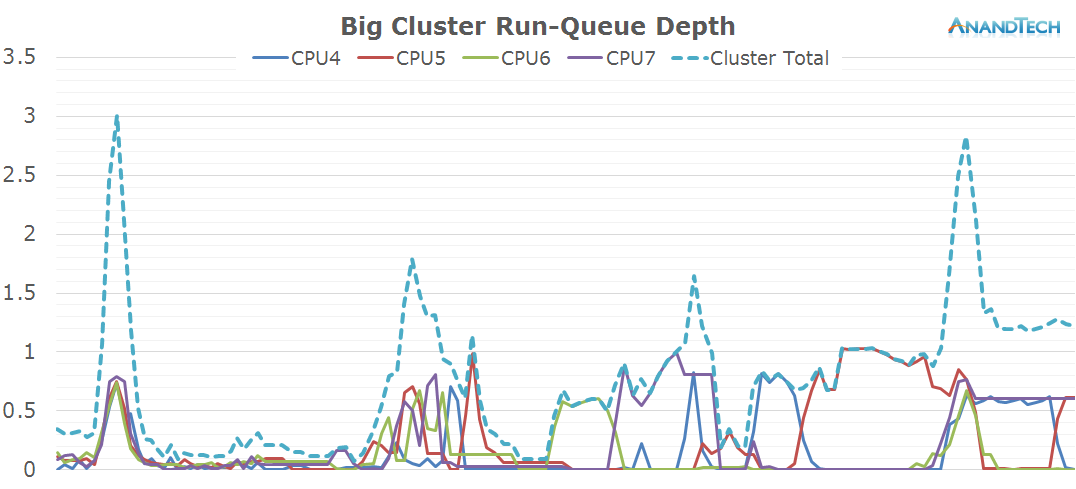









157 Comments
View All Comments
lilmoe - Tuesday, September 1, 2015 - link
"if the interest is high enough":/ Really?
zaza - Saturday, September 5, 2015 - link
Yes Please. It would be nice to see if the same or similar tests works on snaprdagon 810,801 and 615 and Mediatek chips, and intel SoCerchni - Thursday, September 17, 2015 - link
A follow-up with synthetic would be quite interesting.aryonoco - Saturday, September 5, 2015 - link
I just wanted to reiterate the point here an thank the author for this great piece of technical investigative journalism.Andrei, thank you for this work. It is hugely invaluable and insightful.
tipoo - Tuesday, September 1, 2015 - link
Very interesting article. Seems like the mantra of "more cores on mobile are just marketing" was wrong in terms of Android, seems to dip into both four core big and little clusters pretty well. That puts the single thread performance having lagged behind the Apple A series (up until the S6 at least) in a new light, since it can in fact use the full multicore performance.tipoo - Tuesday, September 1, 2015 - link
*That is, barring gaming. More core Android functions do well with multithreading though.jjj - Tuesday, September 1, 2015 - link
In gaming there is a big advantage. By using mostly the small cores you allow for more TDP to go to the GPU. One more relevant thing would console ports in the next couple of years when mobile GPUs will catch up with consoles. The current consoles have 8 small cores and that fits just right with many small cores in Android.retrospooty - Tuesday, September 1, 2015 - link
Not really sure whos "mantra" that was. People that don't understand what the big.little architecture is like some angry Apple fans?tipoo - Tuesday, September 1, 2015 - link
Well sure, whoever they were, but it was a pretty common refrain for every 8 core SoC.soccerballtux - Tuesday, September 1, 2015 - link
for one, it was my mantra. I liked having 4 cores because 2 wasn't enough, but according to my hotplugging times, I only really need 3 for optimal experience most of the time